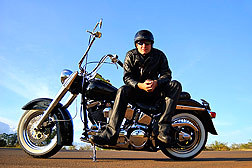Need Help in Web Hosting, Domain, Website Builder, Email and Tools, SSl Certificate?
online college degree, College , University , Domain
Some of the most important parts of your drivetrain are your chain and sprockets - so give them the attention they deserve. How to clean them, check them, and change them, all in one place!
Non-Sealed Chains The most simple type of chain is a standard, non-sealed chain. This chain will require the most maintenance because it doesn't have any way of keeping itself lubricated like an O-ring chain does. If your bike has one of these chains, you'll need to keep a closer eye on it for wear and attend to it more often.
So why would anyone want a non-sealed chain? There are a few advantages to having a these chains depending on the type of riding you will be doing. Many racers prefer this type of chain because they tend to have less friction than their sealed counterparts. Also, many older bikes are not compatible with O-ring chains. While you may want to try to switch your chain over to the less demanding of the types, your engine may be better off staying with its original non-sealed chain.
O-Ring Chains An O-ring chain is a whole lot less needy. This chain has little o-rings between the link plates and rollers of the chain that are used to keep grease and lube inside of your chain while keeping dirt out. While these chains require less upkeep and tend to not need to be replaced as often, they do require some care. Over time, O-rings will lose lubrication and eventually will dry out, crack or even fall off. The best way to slow this process down is with regular lubrication with an o-ring safe lubricant.
There are a few variations in the O-ring family. For example, an X-ring chain is designed to reduce the extra friction over an O-ring chain by the shape of its cross section. X-rings have less contact area between the X-ring and the link plates and rollers, and because of this reduction in friction, X-rings also have a tendency to last longer than O-rings.
Before lubing up your chain, check it for any build up that may need to be cleaned off. If you find that you chain needs to be bathed, put your bike up on a stand so that the rear wheel is off the ground. Rotate the rear wheel to inspect your chain. If you notice that your chain is at the maximum adjustment, is worn down, or has any excessive rust or kinks, it may be time for a new one altogether.
If your chain is still in good condition but just needs to be freshened up, you should use a mild soap and a brush to scrub off any dirt or excess grease build up. While you can use a wire brush on a non-sealed chain, be sure to use a much softer brush on a chain with rings. We really like to use a Simple Solution's Grunge Brush.

online college degree, College , University , Domain
Some of the most important parts of your drivetrain are your chain and sprockets - so give them the attention they deserve. How to clean them, check them, and change them, all in one place!
If its time to replace your chain and sprockets...you've come to the right place.
Chain Maintenance
First of all, in order to properly maintain your chain, you'll need to know what kind of chain your bike is running with.Non-Sealed Chains The most simple type of chain is a standard, non-sealed chain. This chain will require the most maintenance because it doesn't have any way of keeping itself lubricated like an O-ring chain does. If your bike has one of these chains, you'll need to keep a closer eye on it for wear and attend to it more often.
So why would anyone want a non-sealed chain? There are a few advantages to having a these chains depending on the type of riding you will be doing. Many racers prefer this type of chain because they tend to have less friction than their sealed counterparts. Also, many older bikes are not compatible with O-ring chains. While you may want to try to switch your chain over to the less demanding of the types, your engine may be better off staying with its original non-sealed chain.
O-Ring Chains An O-ring chain is a whole lot less needy. This chain has little o-rings between the link plates and rollers of the chain that are used to keep grease and lube inside of your chain while keeping dirt out. While these chains require less upkeep and tend to not need to be replaced as often, they do require some care. Over time, O-rings will lose lubrication and eventually will dry out, crack or even fall off. The best way to slow this process down is with regular lubrication with an o-ring safe lubricant.
There are a few variations in the O-ring family. For example, an X-ring chain is designed to reduce the extra friction over an O-ring chain by the shape of its cross section. X-rings have less contact area between the X-ring and the link plates and rollers, and because of this reduction in friction, X-rings also have a tendency to last longer than O-rings.
Cleaning Your Chain
No matter the type of chain you have, it'll still need to be maintained. Gunk and grease can have a tendency to build up around the chain along with dirt and will increase the wear.Before lubing up your chain, check it for any build up that may need to be cleaned off. If you find that you chain needs to be bathed, put your bike up on a stand so that the rear wheel is off the ground. Rotate the rear wheel to inspect your chain. If you notice that your chain is at the maximum adjustment, is worn down, or has any excessive rust or kinks, it may be time for a new one altogether.
If your chain is still in good condition but just needs to be freshened up, you should use a mild soap and a brush to scrub off any dirt or excess grease build up. While you can use a wire brush on a non-sealed chain, be sure to use a much softer brush on a chain with rings. We really like to use a Simple Solution's Grunge Brush.



